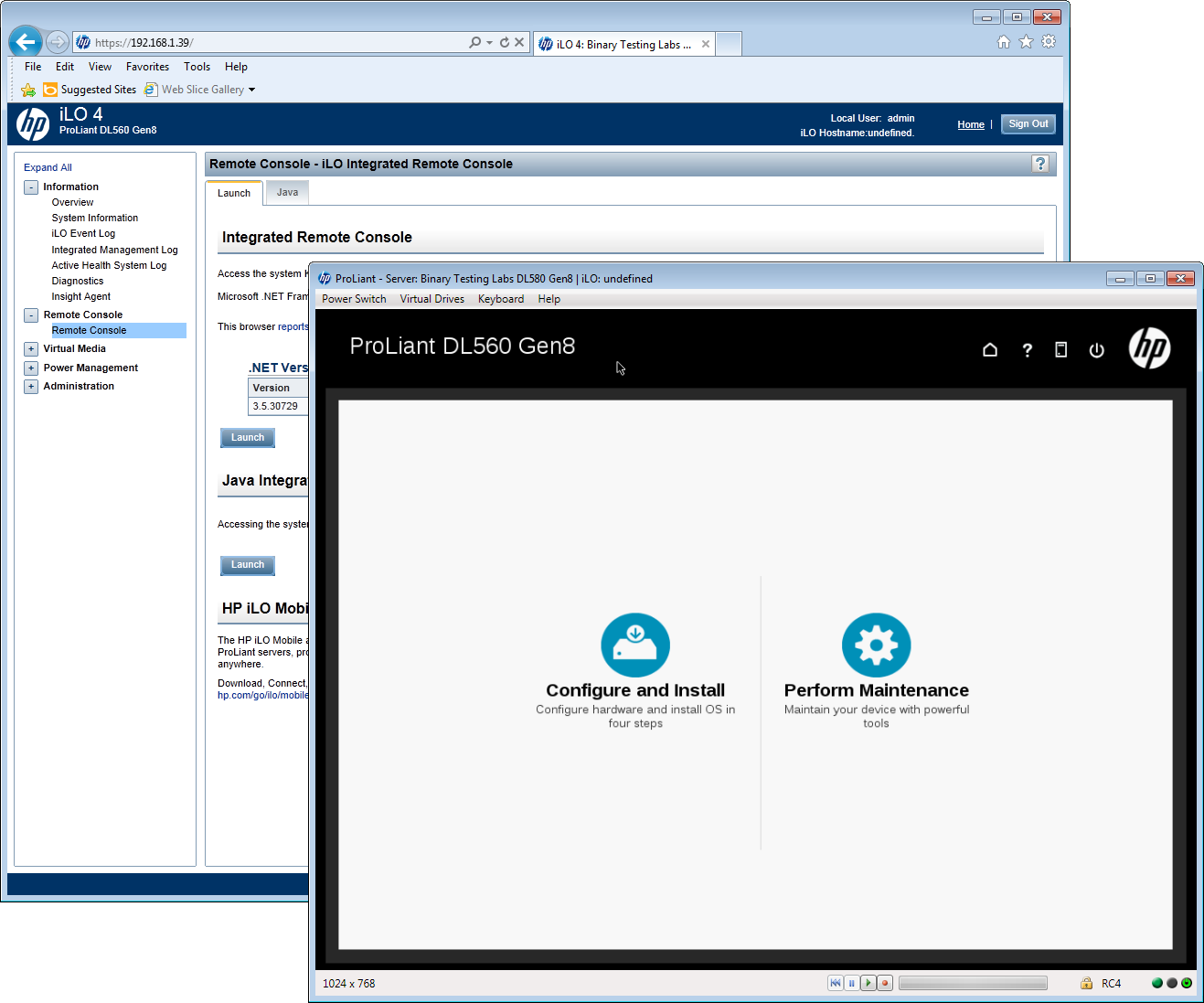HP ProLiant DL560 Gen8 review
The ProLiant DL560 Gen8 is HP’s first eighth generation quad-socket server. In this exclusive review we see if its new Xeon E5-4600 system is the perfect 4P powerhouse for data centres.
It’s been a long wait but HP’s first E5-4600 Xeon server delivers a well designed platform for running business critical apps and heavy duty virtualisations. Internal storage capacity is low but its design leaves plenty of room for expansion, it represents good value and it’s a lot easier on the power supply than a Xeon E7 system.

Expansion potential
Network options are very different to previous generations of ProLiants as HP has removed all embedded network ports and replaced them with a FlexibleLOM card slot. The review system includes the dual-port 10GbE SFP card but HP also offers quad-Gigabit or 10/40Gbps Infiniband modules.
Expansion options are good as the 4P system supports a pair of PCI-Express risers each with three slots. HP's internal layout gives it an edge over Dell's R820 as it has a lot more room at the back for the expansion cards.
The R820's CPU mezzanine card limits it to supporting half-length cards only. The DL560 Gen8 has enough room for full length cards in each riser's top slot and all six slots support full-width cards.
These 4P systems are ideal candidates for virtualisation and the DL560 Gen8 has onboard USB and microSD card slots for booting into an embedded hypervisor. However, Dell is the winner if you want hypervisor redundancy as its R820 supports dual internal SD card slots.

Remote control is an optional extra and Intelligent Provisioning makes light work of OS installation
Eighth generation features
The DL560 Gen8 gets the benefit of most of the features introduced in the eighth generation ProLiants. It's endowed with HP's excellent iLO4 remote management controller which we covered in depth in our exclusive review of HP's ProLiant DL360p Gen8.
OS deployment is streamlined with Intelligent Provisioning which is accessed from the startup menu and does away with the need for HP's SmartStart DVD. And then there are HP's new SmartDrive disk carriers with their myriad status LEDs plus the latest embedded Smart Array P420i RAID controller and its 2GB of capacitor protected FBWC memory.
Conclusion
HP's latest 4P server scores highly for value as there's little price difference between its ProLiant DL560 Gen8 and Dell's PowerEdge R820. If you need a high local storage capacity and hypervisor redundancy then we recommend the R820.
The DL560 Gen8 is equally well built but has better expansion potential as its tidier internal design leaves more room for a wider choice of PCI-e cards. And HP won't be beaten for remote management as the embedded iLO4 delivers the best range of features in its class.
Verdict
It’s been a long wait but HP’s first E5-4600 Xeon server delivers a well designed platform for running business critical apps and heavy duty virtualisations. Internal storage capacity is low but its design leaves plenty of room for expansion, it represents good value and it’s a lot easier on the power supply than a Xeon E7 system.
Chassis: 2U rack CPU: 4 x 2.4GHz Xeon E5-4640 Memory: 64GB DDR3 expandable to 1.5TB (with LR-DIMMs) Storage: 2 x 600GB HP SAS 2 SFF 10K hot-swap hard disks (max. 5) RAID: HP Smart Array P420i with 2GB FBWC and capacitor Array support: RAID0, 1, 10, 5, 50, 6, 60 Expansion: 6 x PCI-e Gen3 slots Network: Dual-port 10GbE FlexibleLOM card Power: 2 x 1200W hot-plug supplies Management: HP iLO4 Standard Warranty: 3yrs on site NBD
Get the ITPro daily newsletter
Sign up today and you will receive a free copy of our Future Focus 2025 report - the leading guidance on AI, cybersecurity and other IT challenges as per 700+ senior executives
Dave is an IT consultant and freelance journalist specialising in hands-on reviews of computer networking products covering all market sectors from small businesses to enterprises. Founder of Binary Testing Ltd – the UK’s premier independent network testing laboratory - Dave has over 45 years of experience in the IT industry.
Dave has produced many thousands of in-depth business networking product reviews from his lab which have been reproduced globally. Writing for ITPro and its sister title, PC Pro, he covers all areas of business IT infrastructure, including servers, storage, network security, data protection, cloud, infrastructure and services.
-
 ‘Phishing kits are a force multiplier': Cheap cyber crime kits can be bought on the dark web for less than $25 – and experts warn it’s lowering the barrier of entry for amateur hackers
‘Phishing kits are a force multiplier': Cheap cyber crime kits can be bought on the dark web for less than $25 – and experts warn it’s lowering the barrier of entry for amateur hackersNews Research from NordVPN shows phishing kits are now widely available on the dark web and via messaging apps like Telegram, and are often selling for less than $25.
By Emma Woollacott Published
-
 Redis unveils new tools for developers working on AI applications
Redis unveils new tools for developers working on AI applicationsNews Redis has announced new tools aimed at making it easier for AI developers to build applications and optimize large language model (LLM) outputs.
By Ross Kelly Published
-
 Google layoffs continue with "hundreds" cut from Chrome, Android, and Pixel teams
Google layoffs continue with "hundreds" cut from Chrome, Android, and Pixel teamsNews The tech giant's efficiency drive enters a third year with devices teams the latest target
By Bobby Hellard Published